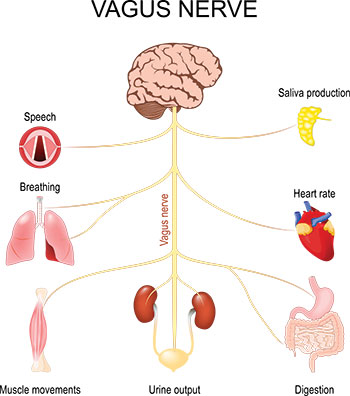Everyone over 40 blames aging for low energy.
But the problem isn’t age...
Your mitochondria may have already lost 50% of their power.
Here's what's going on and how to recharge them (so you feel like you're 20 again): 🧵
But the problem isn’t age...
Your mitochondria may have already lost 50% of their power.
Here's what's going on and how to recharge them (so you feel like you're 20 again): 🧵
This isn’t wellness fluff.
Your mitochondria are responsible for over 90% of your body’s energy.
When they decline, everything suffers:
Energy, focus, muscle repair, even your libido.
Here’s the hard science most doctors never explain:
Your mitochondria are responsible for over 90% of your body’s energy.
When they decline, everything suffers:
Energy, focus, muscle repair, even your libido.
Here’s the hard science most doctors never explain:
Mitochondria are microscopic power plants inside your cells.
They convert oxygen + nutrients into ATP: the energy your body runs on.
Each cell has hundreds to thousands of them.
But they’re fragile and modern life is destroying them.
They convert oxygen + nutrients into ATP: the energy your body runs on.
Each cell has hundreds to thousands of them.
But they’re fragile and modern life is destroying them.

After 40, mitochondrial function can decline by 10–15% per decade.
Why?
• Oxidative damage (ROS)
• Mutations in mtDNA
• Inflammation
Impaired mitophagy (removal of damaged mitochondria)
It’s like trying to power a city with half its generators offline.
Why?
• Oxidative damage (ROS)
• Mutations in mtDNA
• Inflammation
Impaired mitophagy (removal of damaged mitochondria)
It’s like trying to power a city with half its generators offline.

Think your aging is “normal”? Look closer:
• Midday crashes
• Coffee dependence
• Brain fog
• Poor recovery after workouts
• Waking up tired despite 8 hours of sleep
These are red flags. Your cells are screaming for help.
• Midday crashes
• Coffee dependence
• Brain fog
• Poor recovery after workouts
• Waking up tired despite 8 hours of sleep
These are red flags. Your cells are screaming for help.

Today’s environment is mitochondrial poison:
• Ultra-processed foods = oxidative stress
• Blue light = circadian rhythm disruption
• Chronic stress = cortisol overload
• Sedentary living = low oxygen demand
All of this throttles your cellular energy.
• Ultra-processed foods = oxidative stress
• Blue light = circadian rhythm disruption
• Chronic stress = cortisol overload
• Sedentary living = low oxygen demand
All of this throttles your cellular energy.

The good news?
You can reverse this.
Mitochondria are dynamic. They can multiply and recover.
Here's what the latest research shows works best: 👇
You can reverse this.
Mitochondria are dynamic. They can multiply and recover.
Here's what the latest research shows works best: 👇
Strategy #1: Zone 2 Cardio
Low-intensity cardio (aka Zone 2) isn’t just “easy exercise.”
It triggers mitochondrial biogenesis, the creation of new mitochondria.
Just 30–45 mins, 3–4x a week, can rewire your metabolism.
Low-intensity cardio (aka Zone 2) isn’t just “easy exercise.”
It triggers mitochondrial biogenesis, the creation of new mitochondria.
Just 30–45 mins, 3–4x a week, can rewire your metabolism.

Strategy #2: Cold Exposure
Short bouts of cold (like cold showers or ice baths) stimulate mitochondrial activity.
Cold triggers PGC-1α, a protein that boosts mitochondrial growth.
Even 2–3 min/day can make a metabolic difference.
Short bouts of cold (like cold showers or ice baths) stimulate mitochondrial activity.
Cold triggers PGC-1α, a protein that boosts mitochondrial growth.
Even 2–3 min/day can make a metabolic difference.

Strategy #3: Time-Restricted Eating
Intermittent fasting (12–16 hrs) gives mitochondria time to repair.
It activates autophagy, a cleanup process that removes damaged organelles.
Fewer damaged mitochondria = more efficient energy.
Intermittent fasting (12–16 hrs) gives mitochondria time to repair.
It activates autophagy, a cleanup process that removes damaged organelles.
Fewer damaged mitochondria = more efficient energy.

Strategy #4: CoQ10 & Nutrients
Mitochondria need raw materials to work:
• CoQ10: for ATP production
• Magnesium: needed in >300 enzyme reactions
• B vitamins: for energy metabolism
• Carnitine: transports fat into mitochondria
• Alpha-lipoic acid: antioxidant recycling
Mitochondria need raw materials to work:
• CoQ10: for ATP production
• Magnesium: needed in >300 enzyme reactions
• B vitamins: for energy metabolism
• Carnitine: transports fat into mitochondria
• Alpha-lipoic acid: antioxidant recycling
Strategy #5: Light Therapy (Red/NIR)
Near-infrared light (600–850nm) penetrates skin and activates cytochrome c oxidase in mitochondria.
Result? More ATP production.
Used in physical therapy and elite athletics. It’s legit.
Near-infrared light (600–850nm) penetrates skin and activates cytochrome c oxidase in mitochondria.
Result? More ATP production.
Used in physical therapy and elite athletics. It’s legit.

Strategy #6: Mitochondrial Sprints
High-intensity bursts (20-30s all-out) stress your mitochondria.
This activates AMPK and PGC-1α, signaling the creation of more robust energy systems.
Think of it as “shock training” for your cells.
High-intensity bursts (20-30s all-out) stress your mitochondria.
This activates AMPK and PGC-1α, signaling the creation of more robust energy systems.
Think of it as “shock training” for your cells.

Strategy #7: Sleep & Circadian Repair
Melatonin isn’t just for sleep, it’s also a mitochondrial antioxidant.
Good sleep = high melatonin = less oxidative damage.
Get morning sunlight, avoid screens at night. Fixing sleep is bioenergetic medicine.
Melatonin isn’t just for sleep, it’s also a mitochondrial antioxidant.
Good sleep = high melatonin = less oxidative damage.
Get morning sunlight, avoid screens at night. Fixing sleep is bioenergetic medicine.

I used to wake up exhausted, hit a wall by 2pm, and lie awake with my mind racing at night.
I thought it was “stress” or “getting older.”
It wasn’t.
It was my nervous system running on fumes, just like my mitochondria.
I thought it was “stress” or “getting older.”
It wasn’t.
It was my nervous system running on fumes, just like my mitochondria.
Once I learned how to retrain my brain, everything changed:
• Better sleep.
• More focus.
• Steadier energy.
No pills. No ice baths. Just 15 minutes a day of the right input.
• Better sleep.
• More focus.
• Steadier energy.
No pills. No ice baths. Just 15 minutes a day of the right input.
That’s why I created this protocol.
It’s been used by 120+ high-stressed professionals (entrepreneurs, biz owners, and athletes)...
who needed their energy and calm back.
Today, it’s 30% off: bit.ly/tbr-xthc
It’s been used by 120+ high-stressed professionals (entrepreneurs, biz owners, and athletes)...
who needed their energy and calm back.
Today, it’s 30% off: bit.ly/tbr-xthc
Follow @thetomzyd for more science-backed health upgrades.
Share this thread, someone you love needs this.
What’s one insight from this thread that hit hardest? 👇
Share this thread, someone you love needs this.
What’s one insight from this thread that hit hardest? 👇
https://twitter.com/1906019830219575296/status/1939342985076023720
Struggling to get noticed in a crowded health market?
54M views. 28k followers. Turned attention into revenue.
My viral threads will feed your business with qualified leads.
DM me “VIRAL” if you’re ready to scale.
54M views. 28k followers. Turned attention into revenue.
My viral threads will feed your business with qualified leads.
DM me “VIRAL” if you’re ready to scale.

• • •
Missing some Tweet in this thread? You can try to
force a refresh
























